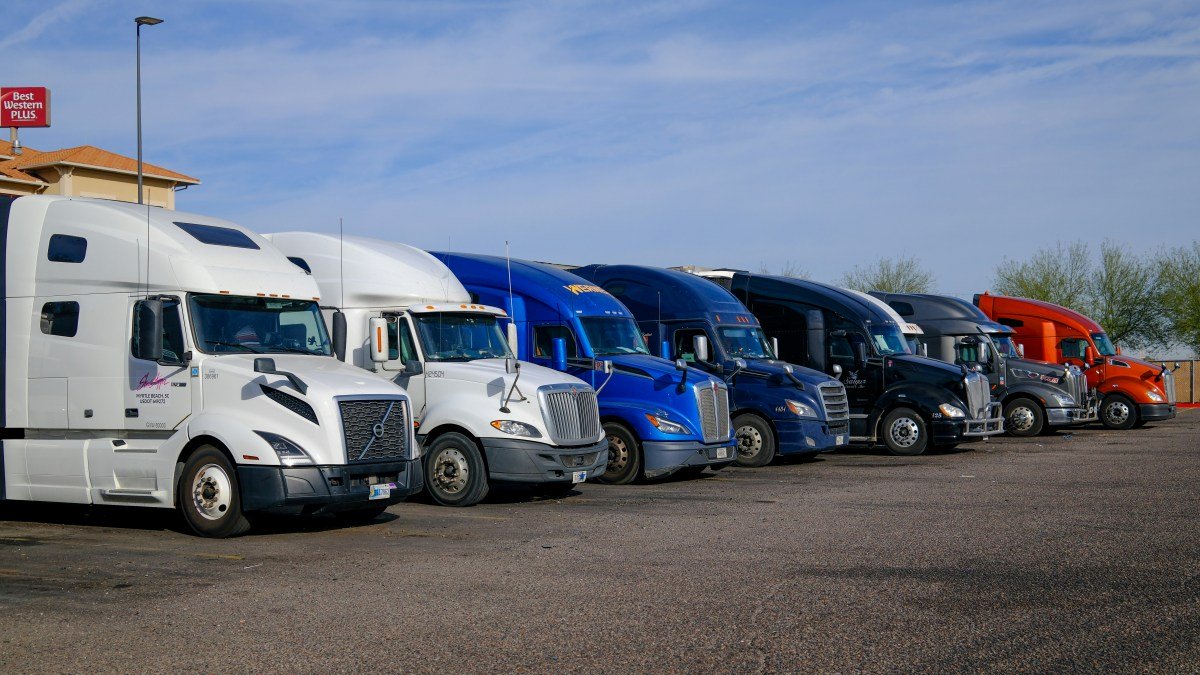Transporting goods involves more than simple pickup and delivery. Freight carriers often face challenges requiring additional services, such as extra labor, time, fuel, or special equipment, leading to freight accessorial charges.
This guide covers what these fees are, why they’re charged, the different types, and how to plan for them. It also offers tips for carriers to optimize their work and shippers to reduce costs by avoiding unnecessary fees.
What are Accessorial Charges?
In the transport and logistics industry, accessorial charges are fees freight carriers bill shippers for services that exceed the basics of moving goods from one point to another. These include any additional services required to complete load deliveries, such as:
- Unpacking
- Using liftgates
- Covering non-commercial destinations
- Inside and residential pickups or deliveries
- Fuel surcharges
- Detentions
- Appointment fees
- Reweigh charges
Typically, the base rate does not include accessorial fees, freight carriers add them to the final bill for unexpected services.
However, some can be planned and included in the initial invoice. These fees are most common in less-than-truckload (LTL) shipments but can also apply to full truckload (FTL), small parcel, and intermodal shipments.
Reasons for a Freight Accessorial Charge
Freight carriers charge accessorial fees for several reasons. But they all fall under three major categories–equipment, in-transit, and administrative oversight.
- Equipment: Accessorial fees apply when special equipment is needed for safe loading, delivery, or transport, especially if not arranged in advance. These fees cover the time spent adding and using the equipment.
- In transit: In-transit accessorial charges cover extra labor needed after pickup, during transport, or at delivery. Fees may apply for redelivery, out-of-route miles, layovers, or limited access. The fee depends on how long the issue delays the shipment.
- Administrative: a transportation provider can charge extra fees for administrative mistakes, especially bill of lading (BOL) errors. The accessorial fee charged usually covers the time taken to correct the mistake.

Common Accessorial Charges
There are over 20 types of accessorial fees charged by freight transportation carriers. Understanding these charges is crucial to ensure you’re well-compensated for the services you provide as a carrier.
It’s critical for shippers to understand these charges so they understand the extra charges they may receive from a transportation provider and minimize them. Here are the most common accessorial charges worth noting:
Detention
A detention fee applies if a shipment gets held up for too long at the pickup or final destination after a truck driver shows up at the required time. Often, detention fees get charged per hour. They accumulate when the consignor or consignee takes their time to load or unload the trailer, and the driver has to wait onsite longer than the agreed time.
Truckers get paid per mile and have to work within specific hours-of-service regulations set by the Federal Motor Carrier Safety Administration (FMCSA). If they wait onsite for a long time, they lose income. Detention charges allow truckers to get compensated for any time lost during this waiting period. They can be between $50 and $75 per hour or more.
Layovers or Re-delivery
Layover and re-delivery fees are common accessorial charges. Layover fees apply when a load isn’t ready at the scheduled time, while re-delivery fees apply when a shipment must be delivered again.
Lack of equipment or route issues can cause delays, leading to productivity losses. These fees, typically ranging from $250 to $500, help offset those losses and vary based on the equipment used..
Truck Ordered Not Used (TONU)
A shipper can place a truck order and not use it. If this happens, and the truck order gets canceled after the pre-established cut-off time stipulated in the contract, TONU accessorial charges apply. These charges range from $200 – $600 or more for a specialized trailer order.

Over-Dimensional (OD) Cargo
Over-dimensional cargo charges cover overweight, oversized, or over-length freight. These fees kick in if your freight exceeds the standard legal dimensions specified in various federal, state, and local government regulations.
Most states allow a threshold of 8ft 6 inches tall, 8ft 6 inches wide, 53ft lengthwise, and 80,000 pounds gross weight. You’ll have to get special permits to transport cargo above these dimensions. OD accessorial charges cater to the expenses of getting these permits and the premium charges of trucker expertise needed to transport OD cargo.
The exact costs you can charge as an OD accessorial charge vary based on several factors, including size of the cargo, transport distance and the states you pass through.
Tarp Charge
Tarp charges come into play if you’re moving goods on an open-deck trailer and must protect them from unexpected weather changes or other elements. Tarps are heavy equipment that takes time to incorporate. The charge compensates drivers since they won’t be earning during tarping.
Tarp charge cost estimates range from $100 to $150 but could be higher depending on the size of the cargo being tarped and weather, among other factors.
Re-consignment
Re-consignment charges apply when a freight’s final destination changes once the load is in transit. This may happen because the shipper provided an incorrect address or they prefer a new freight delivery destination.
The cost varies significantly depending on how far the new destination is from the initial one, but it follows the rate per mile established in the original quote.
Hazmat
It costs carriers more to move hazardous materials because the Department of Transportation requires the driver and equipment to meet specific requirements. Hazmat accessorial fees cover these costs.
These extra charges are added to the initial quote if the hazmat requirements are known. If not, they’re included in the final bill.

Tanker Endorsement
According to FMCSA, truck drivers transporting large volumes of liquid loads (more than 1,000 gallons) in dry van trailers must have a tanker endorsement. Tanker endorsement fees cater to this requirement. It’s often included in the original quote if communicated upfront.
Excess Cargo Insurance
Moving some high-value loads requires cargo insurance that surpasses the industry standard of nearly $100,000 worth of freight coverage. Excess cargo insurance accessorial fee takes this into account. Its rates vary greatly based on three main factors:
- Type of commodity
- Number of miles the freight needs to go and the lanes used
- Value of cargo
Special Equipment
Special equipment charges cover the costs and labor of adding specialized equipment to protect cargo during transport and delivery.
The equipment can be excess straps in van trailers, edge protectors mainly on open-deck trailers, blankets, pad wraps, load bars, dunnage, decking, and pallet jacks. Special equipment costs vary based on the type and number of equipment required.
Out-of-route Miles
These charges apply if a transportation provider offers additional services that take more than ten miles beyond the contracted rate.
Stop-off Charge
Stop-off charges come into play if the load has to be delivered to more than two locations. The carrier has to make several stops to pick up or deliver goods to multiple destinations.
Driver Assist
Loading or unloading a trailer is beyond a carrier’s overall job duties. If a truck driver has to assist with these services, they charge for the additional labor separately. Driver assist charges vary according to the services offered.
For instance, asking a trucker to carry a pallet jack to a truck’s back end might fetch a lower fee than asking them to unload the shipment by hand and move goods inside a building.

Lumper Fees
Instead of truckers performing the loading or unloading duties, most large distribution warehouses hire well-trained third-party laborers, often called lumpers, to do the work. Carriers pass the lumper fees on to shippers.
Fuel Surcharge
Fuel surcharges appear on almost 93% of freight transportation bills. They offset the rising fuel prices. For this accessorial fee, billing occurs at a variable rate following the weekly updates on the Energy Information Administration (EIA)’s website.
How to Avoid Paying Extra for Accessorial Fees
While most accessorial fees are unavoidable, there are some steps shippers can take to minimize these extra costs and lower shipping costs. A few of these include:
- Automation. Automating shipping execution limits human errors and improves accuracy in shipping process compliance. It prevents administrative errors, such as incorrect classifications or bill of lading mistakes, lowering accessorial charges.
- Prioritize end-to-end shipping visibility. Doing this helps to identify and mitigate issues. End-to-end shipment visibility generally involves anticipating the equipment required for a shipment loading and unloading, coordinating delivery and unloading times with the receiver, and limiting any additional fuel or time spent on each trip.
- Double-check shipment details with a carrier. Confirming the accuracy of shipment information with a carrier, particularly the precise size, weight, and other legal dimensions when booking a shipment, can minimize accessorial costs.
Final Thoughts
For freight carriers, accessorial charges provide extra revenue, but for shippers, they increase costs. While shippers can reduce these fees, carriers must understand the supply chain to plan and bill accurately, ensuring fair compensation. This includes knowing the shipper’s facilities, the products, and the receiver’s logistics..
For more information about the transport and logistics industry, including how it works and ways you can navigate its systems profitably, visit the Mission Financial Services blog.


























